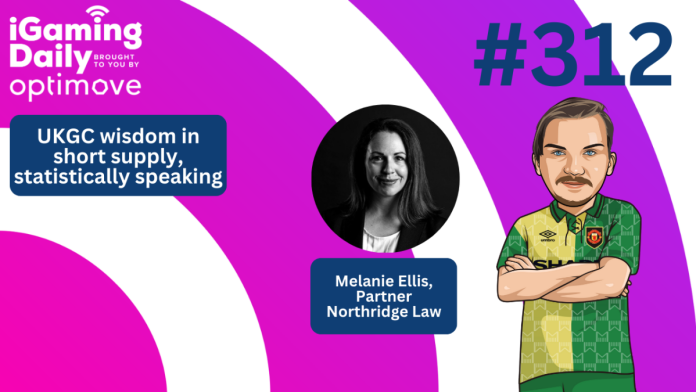Yesterday (July 25), the UK Gambling Commission (UKGC) published its first-year statistics and datasets for the Gambling Survey for Great Britain (GSGB) for 2023.
On today’s iGaming Daily, supported by Optimove, James Ross, SBC’s Multimedia Editor is joined by Melanie Ellis, Partner at Northridge Law, to discuss the new survey and the key highlights from the data provided.
Ahead of the release of the GSGB by the UKGC, it published guidance stating that the data gathered is just estimates due to the methodology of the study and as such shouldn’t be used to provide direct comparisons to prior surveys or as measures of addiction to gambling.
As this is the case, the pair consider whether it is wise for the UKGC to release potentially unreliable statistics.
Melanie said: “In short, no. I don’t think it’s wide for them to release these official statistics at this time. The issue isn’t just about the fact that these can only ever be estimates of problem gambling rates. There are concerns that have been expressed about the survey methodology after the pilot stage.
“There are still steps the commission needs to be taking to establish the reliability of the data. So my view is until they’ve completed those steps, they shouldn’t be releasing these as official statistics. I do think the commission needs to treat this as seriously as it deserves and take the necessary steps before releasing these as official statistics.”
She added that due to the potential margin for error in the results, it is hard to find any key takeaways at this time and instead conclusions will need to be drawn when the survey is repeated in the coming years.
The GSGB has replaced previous health surveys conducted by the NHS and its own studies conducted using telephone interviews.
Previous surveys by the NHS found there to be a problem gambling rate of 0.3% of the population whereas the latest figures from the UKGC estimate this figure to be closer to 2.5%.
On the difference in results, Melanie said: “This is where the commission doesn’t want us to compare these two figures but it’s impossible not to notice the difference. It’s almost a tenfold difference in the number of people who are found to be experiencing problem gambling behaviours.
“I think all I would say about it is it highlights the fact that one or the other of these surveys was not accurately finding the rates of problem gambling. And at this stage, I don’t think we can confidently say which one it is. It may be that the true figure falls somewhere in between those numbers.”
The survey used the Problem Gambling Severity Index (PGSI) to measure symptoms of gambling disorder and adverse harms among the participants. The index measures responses to problem gambling questions on a scale and categorises scores between 0 (no adverse symptoms) and 8+ (high risk).
The results found that the proportion of respondents with a score of eight or more was more than six times higher for those who had used online slots compared to all people who had gambled in the last 12 months.
Melanie describes the figure as “concerning” for the igaming industry however she suggested that the results should be used over time to assess whether interventions such as stake limits are reducing the rates of problem gambling.
She added: “We have to bear in mind that correlation doesn’t equal causation. So these results don’t tell us that online slots have caused 25% of users to become people experiencing problem gambling. It might be telling us that this is a product that’s more likely to be used by somebody in that situation. I think a lot more research is needed into that.”
Summing up her thoughts on the study, Melanie urges operators to be “cautious about taking it away to use for any other as a policy-making purpose” due to concerns over the methodology of the report and the accuracy of the results.





